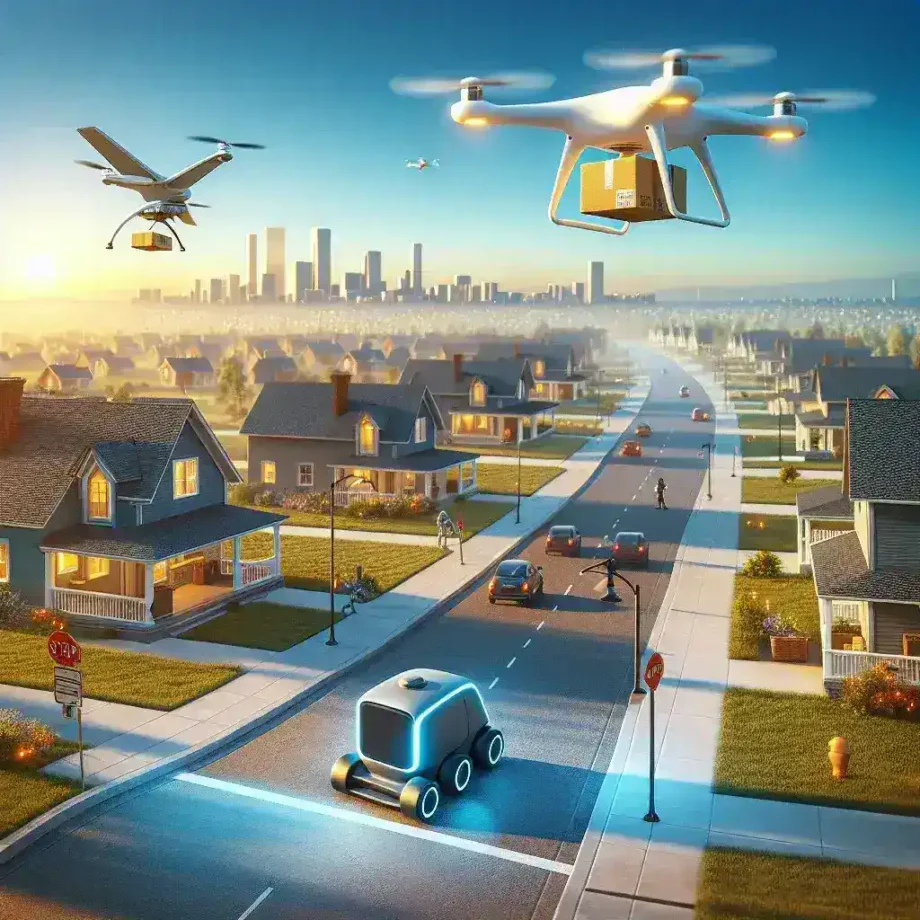
Amazon’s Robotic Delivery Revolution: US Trials and the Future of Last-Mile Logistics
Amazon, the behemoth of e-commerce, is relentlessly pushing the boundaries of delivery innovation. Its latest venture? Deploying autonomous robots for last-mile delivery, a notoriously complex and expensive aspect of the logistics chain. These ongoing trials in the US, utilizing a blend of proprietary technology and partnerships, represent a significant leap forward in the quest for faster, cheaper, and more efficient package delivery. The implications are vast, impacting everything from consumer expectations to the very fabric of urban logistics. This exploration delves into the intricacies of Amazon’s robotic delivery program, examining its potential benefits, the challenges faced, and the potential future it paints for the industry.
TSTTechnology and the Robotic Delivery Ecosystem
While Amazon hasn’t explicitly named its specific robotic technology as “TSTTechnology,” the underlying technology likely involves a sophisticated blend of several key elements. These encompass advanced robotics, AI-powered navigation systems, sensor technologies for obstacle avoidance, and robust communication networks for real-time monitoring and control. The success of this endeavor hinges on the seamless integration of these technologies into a functioning delivery system capable of navigating complex urban environments. The deployment is not merely about the robot itself; it’s about creating a sophisticated ecosystem that ensures safe, reliable, and efficient package delivery. This includes dedicated storage facilities, optimized delivery routes, and robust customer support systems.
Challenges and Hurdles in Robotic Delivery
The transition to widespread robotic delivery isn’t without its share of challenges. Navigating unpredictable urban environments poses significant technical hurdles. Unexpected obstacles—pedestrians, cyclists, construction zones, and even unpredictable weather conditions—demand sophisticated algorithms and sensor systems to ensure both the safety of the robots and the public. Legal and regulatory frameworks are also still evolving, and differing regulations across various US states and municipalities add layers of complexity. Moreover, the initial capital investment in developing and deploying these robots is substantial. Then there’s the potential for technological malfunctions, cybersecurity risks, and the need for comprehensive maintenance programs to ensure continuous operation.
Comparing Robotic Delivery to Traditional Methods
Traditional delivery methods, relying heavily on human drivers, face numerous challenges of their own: traffic congestion, rising fuel costs, driver shortages, and the environmental impact of vehicle emissions. Robotic delivery offers a potential solution to many of these issues. While the initial investment is significant, robots can operate 24/7, reducing labor costs in the long run and potentially decreasing overall delivery times. Furthermore, electric-powered robots offer a more environmentally friendly alternative to gasoline-powered delivery vehicles, contributing to sustainable logistics. However, robotic delivery is not a complete replacement for human drivers. In the foreseeable future, a hybrid model that combines the strengths of both approaches might prove to be the most effective solution.
The Future of Last-Mile Logistics: A Speculative Outlook
As the technology matures, the potential applications of robotic delivery extend far beyond simple package delivery. Imagine robots delivering groceries, medications, or even small-scale emergency supplies in remote areas. The possibilities are endless. The integration of robotic delivery with other emerging technologies, such as drone delivery and smart city infrastructure, promises to further optimize the efficiency of the logistics chain. However, the successful implementation of this technology will require ongoing collaboration between tech companies, government regulators, and the public to address the aforementioned challenges and concerns.
Societal Impacts and Ethical Considerations
The widespread adoption of robotic delivery will inevitably bring about significant societal changes. The potential displacement of human workers in the delivery sector is a major concern that necessitates careful consideration. Moreover, ethical questions surrounding data privacy and the potential misuse of autonomous robots need to be addressed proactively. Ensuring the equitable distribution of the benefits and responsibilities associated with this technology is crucial for a just and equitable transition.
Real-World Examples and Case Studies
Amazon’s trials are not isolated incidents. Numerous companies are exploring the potential of robotic delivery, conducting their own tests and trials in various locations. These initiatives, while differing in their technological approaches, collectively contribute to the burgeoning field of autonomous delivery systems. Analyzing the progress and challenges faced by these various companies will provide valuable insights into the future trajectory of the industry.
Step-by-Step Analysis of the Robotic Delivery Process
A typical robotic delivery process might involve the following steps: (1) Order placement and processing; (2) Package preparation and loading into the robot; (3) Robot dispatch and navigation using AI-powered mapping and obstacle avoidance; (4) Delivery to the designated location; (5) Package handover using secure mechanisms; (6) Robot return to base station for recharging and restocking; (7) Post-delivery tracking and data analysis. Each step involves intricate technological components and meticulous planning to ensure a smooth and efficient process.
Pros and Cons of Robotic Delivery
Pros: Increased efficiency, reduced delivery times, lower labor costs, reduced carbon footprint, 24/7 operation, potential for expansion into underserved areas.
Cons: High initial investment, technological challenges, regulatory hurdles, ethical considerations, potential job displacement, security vulnerabilities.
Conclusion (Implicit): The future of last-mile delivery is likely to be a blended approach, combining the strengths of both human drivers and autonomous robots. As the technology continues to evolve and address its challenges, robotic delivery will likely play an increasingly significant role in shaping the landscape of logistics and delivery systems worldwide.
For further reading on autonomous delivery systems, please refer to these resources: Example Resource 1 and Example Resource 2 (replace with actual high-authority resources).
